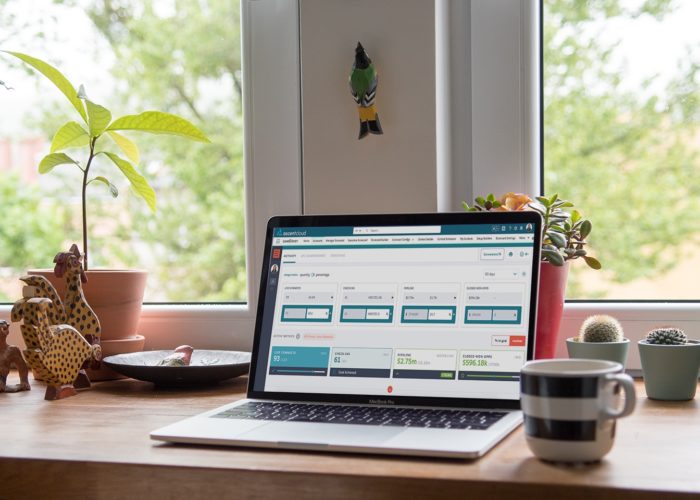 It’s one of those questions we’re used to hearing. We’re asked while working trade shows and attending networking events and even prospecting on the phone. And our answer never changes: No, enterprise gamification is not just for millennials.
It’s one of those questions we’re used to hearing. We’re asked while working trade shows and attending networking events and even prospecting on the phone. And our answer never changes: No, enterprise gamification is not just for millennials.
If it were, we wouldn’t have some of the clients we do. That’s because several of the companies we work with take advantage of gamification to get teams of seasoned sales professionals focused on the right things. Here’s why it works:
1.) Adopting technology and having fun don’t always go together.
It’s not that we’re stereotyping. My grandma uses Facebook more than I do. (That’s a lot.) But simply put: Present technology wasn’t around when some of today’s more seasoned sales professionals started. As a result, every team has a fraction of those professionals that resists technology.
Sales competitions, on the other hand, have been around forever. So you can marry this form of gamification with technology to drive adoption.
That’s exactly what Felipe Gonzales-Paul, one of our account executives, centers his response on when asked if gamification comes with age limits. “Regardless of whether or not you buy into the concept of a CRM, you’re going to buy into the idea of a competition,” he’ll say.
Then he’ll watch it work. Like he did when one client in the dental industry used gamification to inspire its team to use Salesforce. Before the company developed a competition around CRM adoption, most of its team hadn’t even logged into Salesforce.
Another of our account executives, Brendan Hartt, saw similar results when one technology solutions provider ran a pilot of our gamification app on a team of seasoned salespeople that refused to use Salesforce. The company ran a hidden contest – one that nobody could see – to track Salesforce use around logging data. After one week, the team scored 20 points. Then the contest went public. The team accumulated 395 points around various activities by the end of day one.
2.) The desire to be recognized doesn’t expire.
Yes, millennials grew up with more video games. Stereotypes tell us they also grew up with more recognition – in environments that equipped them with the “you can do anything” attitude. But does that mean they’re the only ones seeking recognition professionally?
Not according to Jacquelyn B. James, Director of Research at the Sloan Center on Aging and Work at Boston College and one of the authors of a study around aging and employee engagement in the retail industry. “There is this idea among employers that older workers require a lot of accommodations,” she said in a press release on the study. “Older workers want the same things other workers want: opportunities for learning, job clarity, workplace flexibility and supervisors who show concern for their well-being and recognition for a job well done.”
And recognition ties directly into gamification. Here’s what we see often: Real-time contest standings fill an office during a competition – scores and stats are shared via email, on Salesforce and on the office flat screens – so everyone involved in a competition knows where everyone else stands. Recognition from colleagues and leadership flows naturally from there. (For more on this, read: “Workplace Contests Can Better your Recognition Game.”)
Oh, and by the way – on this topic of things that don’t expire, last time we checked, neither does the desire to have fun. (That’s one more point for the “gamification for older generations” argument.)
3.) No matter what age you are, you don’t want to be seen at the bottom of the leaderboard.
Most salespeople are competitive by nature – that’s just how it works. And that’s why gamification works for all ages. When I asked Brendan about his experiences with this, he said: “I’m constantly hearing from companies that they struggle with seasoned sales folks taking advice on using Salesforce. They just don’t respond to the banging on the desk mentality and the ‘You have to do this!’ But they respond to competition– especially when they fall behind a peer in the rankings.”
So there you have it – whether it’s their first day or 25th anniversary on the job, nobody wants to look up at the office flat screens and see their face at the bottom of the leaderboard.
We’ve seen proof of that in client stories of even disengaged employees finding motivation through gamification. A manager at The Monterey Company actually had a sales rep approach him during a contest and tell him they were not okay with being at the bottom of the leaderboard. That rep then asked for coaching. Another client, hiredMYway, saw a typically lethargic salesperson jump into action the moment their first competition began. (You can read more about that here.)
That study I mentioned by Jacquelyn James actually revealed that older workers in retail tend to be more engaged than younger staff. If this translates to other industries, and gamification can even motivate your disengaged team members, what do you think it can do for your engaged, seasoned professionals?



